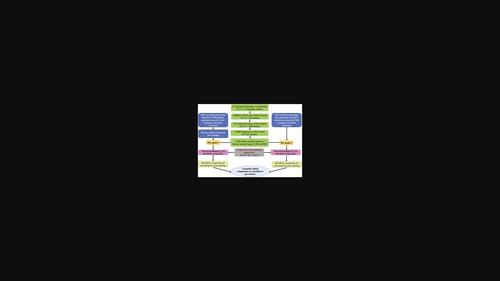当前位置:
X-MOL 学术
›
Adv. Theory Simul.
›
论文详情
Our official English website, www.x-mol.net, welcomes your
feedback! (Note: you will need to create a separate account there.)
Predicting Sulfur-Rich Oxysulfide Perovskites for Water-Splitting Applications Using Machine Learning
Advanced Theory and Simulations ( IF 2.9 ) Pub Date : 2023-03-03 , DOI: 10.1002/adts.202200694 Vidur Mithal 1, 2 , Surajit Adhikari 1 , Priya Johari 1
Advanced Theory and Simulations ( IF 2.9 ) Pub Date : 2023-03-03 , DOI: 10.1002/adts.202200694 Vidur Mithal 1, 2 , Surajit Adhikari 1 , Priya Johari 1
Affiliation

|
Solar energy offers a promising means of addressing energy supply and storage problems, but this potential is not fully realized due to a lack of suitable semiconducting materials. The discovery of new materials with desirable properties has historically been conducted either using an experimental or a first-principles density functional theory based study. These approaches are extremely time-intensive, and therefore, cannot be applied effectively to study a large number of systems. In such situations, machine learning can be used to make predictions about properties of new compounds from known data, providing a more efficient route to materials discovery. Here, this approach is used to predict the bandgap of a series of oxysulfide perovskites (of the form of ABOXS3−X, X = 0,1,2,3), in general, and sulfur-rich ABOS2, in particular. Atomic properties of constituent elements in the perovskite structures via 1.048 millions possible subsets of features are employed to train the models. Further, feature selection, kernel ridge regression, and k-nearest neighbors classification methods are applied to downselect the promising ABOS2 based oxysulfide perovskites for water-splitting. The accuracy of each model is determined using standard statistical metrics. Finally, seven stable but yet unsynthesized sulfur-rich oxysulfide perovskites (BiInOS2, BiGaOS2, SbInOS2, SbGaOS2, SbAlOS2, SnZrOS2, and MgSnOS2) that show potential for water-splitting applications are proposed.
中文翻译:

使用机器学习预测用于水分解应用的富硫氧硫化物钙钛矿
太阳能为解决能源供应和储存问题提供了一种很有前途的方法,但由于缺乏合适的半导体材料,这种潜力尚未完全实现。历史上一直使用实验或基于第一性原理密度泛函理论的研究来发现具有理想特性的新材料。这些方法非常耗时,因此不能有效地应用于研究大量系统。在这种情况下,机器学习可用于根据已知数据预测新化合物的性质,从而为材料发现提供更有效的途径。在这里,这种方法用于预测一系列氧硫化物钙钛矿的带隙(形式为 ABO X S 3− X,X = 0,1,2,3),一般来说,特别是富含硫的 ABOS 2 。通过 104.8 万个可能的特征子集,钙钛矿结构中组成元素的原子特性被用于训练模型。此外,应用特征选择、核岭回归和k最近邻分类方法来下选有前途的基于 ABOS 2 的氧硫化物钙钛矿用于水分解。每个模型的准确性是使用标准统计指标确定的。最后,七种稳定但尚未合成的富硫氧硫化物钙钛矿(BiInOS 2、BiGaOS 2、SbInOS 2、SbGaOS 2、SbAlOS 2、SnZrOS2和 MgSnOS 2 ) 显示出水分解应用的潜力。
更新日期:2023-03-03
中文翻译:

使用机器学习预测用于水分解应用的富硫氧硫化物钙钛矿
太阳能为解决能源供应和储存问题提供了一种很有前途的方法,但由于缺乏合适的半导体材料,这种潜力尚未完全实现。历史上一直使用实验或基于第一性原理密度泛函理论的研究来发现具有理想特性的新材料。这些方法非常耗时,因此不能有效地应用于研究大量系统。在这种情况下,机器学习可用于根据已知数据预测新化合物的性质,从而为材料发现提供更有效的途径。在这里,这种方法用于预测一系列氧硫化物钙钛矿的带隙(形式为 ABO X S 3− X,X = 0,1,2,3),一般来说,特别是富含硫的 ABOS 2 。通过 104.8 万个可能的特征子集,钙钛矿结构中组成元素的原子特性被用于训练模型。此外,应用特征选择、核岭回归和k最近邻分类方法来下选有前途的基于 ABOS 2 的氧硫化物钙钛矿用于水分解。每个模型的准确性是使用标准统计指标确定的。最后,七种稳定但尚未合成的富硫氧硫化物钙钛矿(BiInOS 2、BiGaOS 2、SbInOS 2、SbGaOS 2、SbAlOS 2、SnZrOS2和 MgSnOS 2 ) 显示出水分解应用的潜力。











































 京公网安备 11010802027423号
京公网安备 11010802027423号